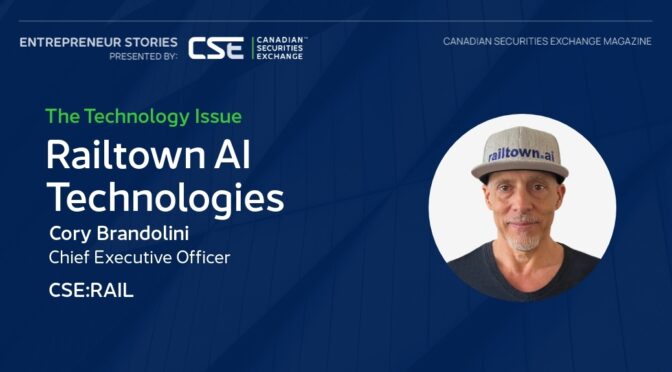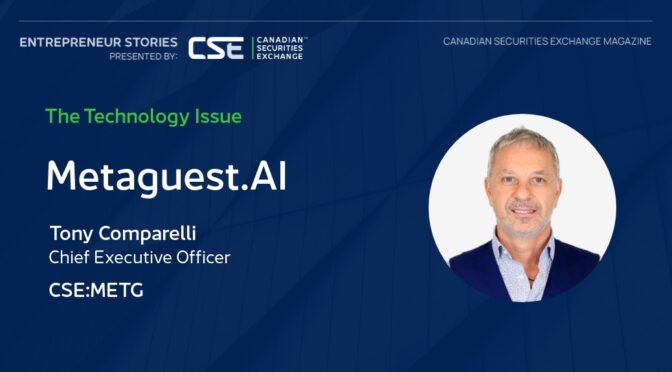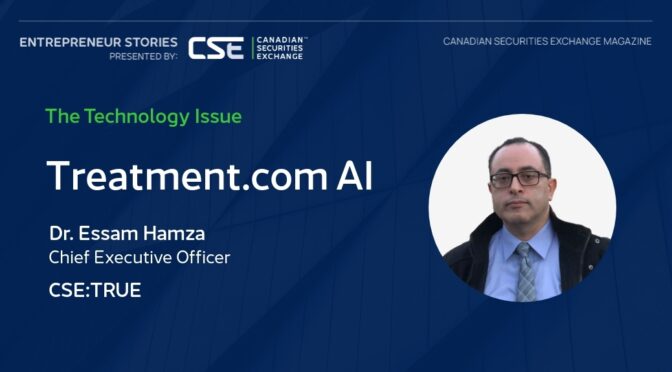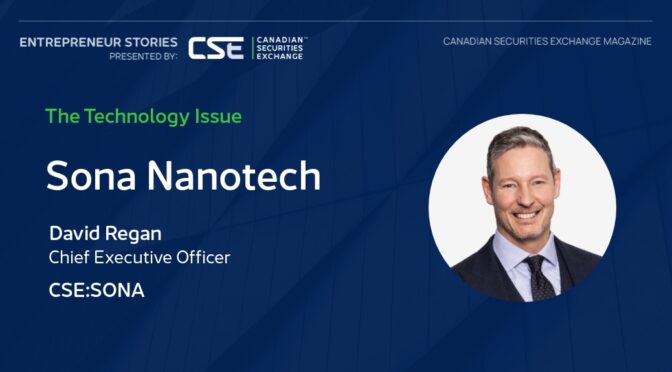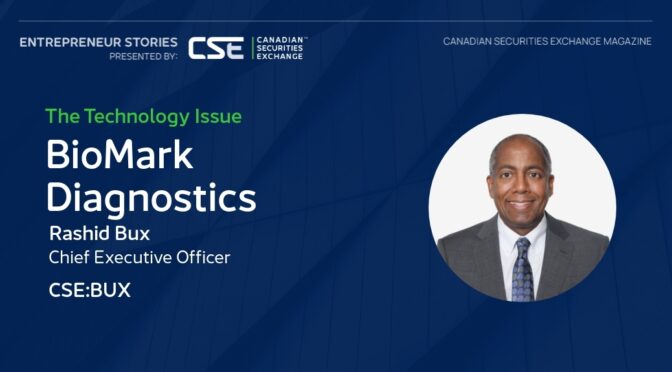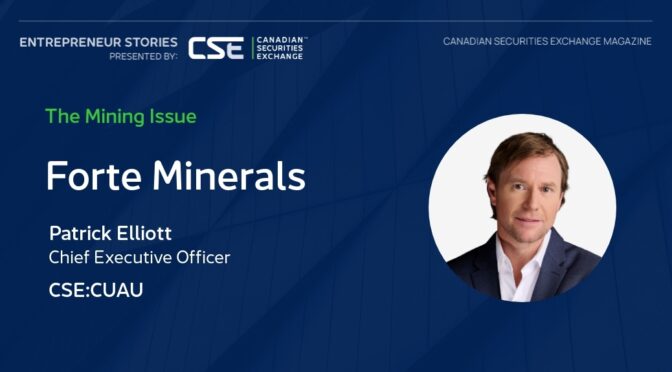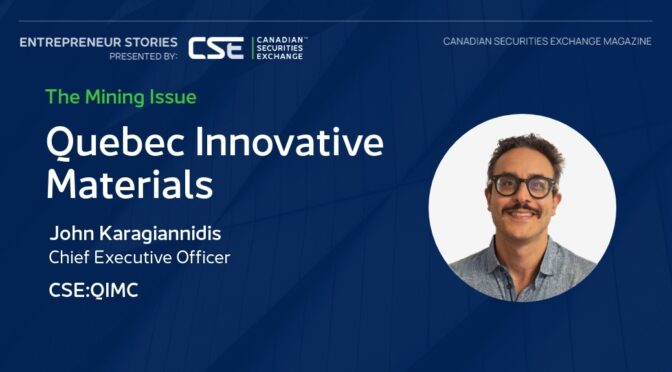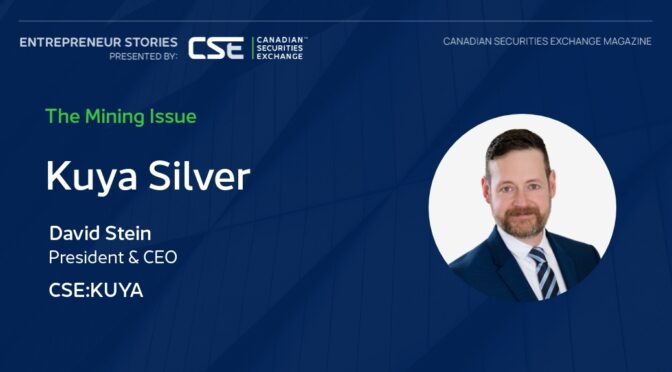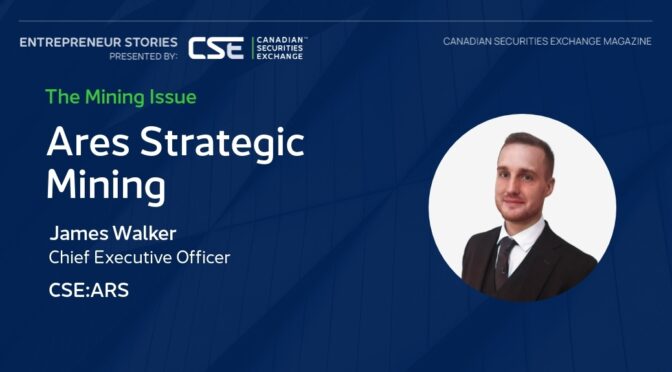Demand for software continues to rise in our increasingly digitized world as companies across all industrial sectors look to make their operations more efficient. Little do most people know that software developers themselves rely on other technologies to help them be more effective in the development, building, and maintenance of software applications.
Railtown AI Technologies (CSE:RAIL) is one of the companies tackling the inefficiencies in how software applications are developed, built, scaled, managed, and maintained. Using innovative artificial intelligence developed in-house, Railtown’s suite of technology will identify problems within the software development and deployment process, providing knowledge and insight that includes suggested fixes and tests to increase the velocity of resolution.
Chief Executive Officer Cory Brandolini co-founded Railtown with a clear goal: to create an AI solution that transforms and elevates the end-to-end software development process.
“My co-founders and I have been building software applications for 30 years, and as a result, we have built applications across many verticals and have used most development methodologies in doing so,” Brandolini tells Canadian Securities Exchange Magazine.
“We have experienced the best and worst of those methods, and it was from that experience that we knew we wanted to build the tools and frameworks to tackle all of the negative and inefficient software engineering and maintenance processes. Our Conductr AI model is the result of that work and is now positioned to be a big player in the AI-driven conversion of traditional methodologies of software development into a more efficient approach.”
“We wanted to create a very intelligent agent that not only understood the design aspects of what you were trying to build but also the running and the maintenance of what you built as well.”
Brandolini explains that all of the work that goes into software development still relies on talented developers. “Human beings make up the bulk of the workload that goes into designing, building, training, deploying, managing, and maintaining a software application,” he says. “It’s a manpower-heavy load to run large, scalable software applications. The goal is to alleviate the non-productive tasks from the developer workload and to free them up and assist them in the creation of great new game-changing applications.”
With reams of data to examine, Railtown has been able to determine that its technology can save over eight hours of a human developer’s time per week. Apply that metric across a developer team and a full work year, and the potential to recapture incredible amounts of corporate value becomes obvious.
Railtown operates in a high-growth space where more than 30 million software developers work globally, with that number climbing by 3% to 4% every year. Not surprisingly, the developer tools market is projected to expand from US$6.6 billion in 2024 to US$22.6 billion by 2033, according to Business Research Insights.
For Railtown, the opportunity lies in reducing losses caused by inefficient software development. “It works out to be about 40% of your resources in non-productive tasks,” Brandolini explains.
“Our goal was to be able to create a very intelligent, agentic solution that could do a significant amount of the non-productive tasks in order to keep developers building and running new products, as opposed to fixing and maintaining and constantly reviewing historical technical debt.”
In the United States alone, the cost of inferior software was estimated to be US$2.4 trillion in 2022 by the Consortium for Information & Software Quality (CISQ). Related losses due to cybercrime and problems in software supply chains were cited, as was the term “technical debt,” which is the implied cost of future work to fix sub-optimal software.
At scale, software bugs can lead to extremely costly problems, with the millions of automobiles being recalled in 2024 due to software issues being just one example.
A flawed software update by cybersecurity firm CrowdStrike in July 2024 disrupted everything from personal laptops to enterprise infrastructure. One estimate put the resulting losses for Fortune 500 companies at over US$5 billion.
Railtown is helping to address these types of problems with its proprietary Application General Intelligence (AGI) platform, Conductr.
The system is designed to support the entire software development lifecycle. It ingests a wide range of data sources, including developer tickets, code repositories, deployment logs, and documentation, and uses the information to understand how a software application works.
From there, Conductr can automate many of the repetitive, time-consuming tasks developers typically manage. This includes generating reports and release notes, identifying root causes of bugs, writing code fixes, creating documentation, and deploying tests.
As the platform learns more about an application’s architecture and workflows, it can begin to predict issues before they arise and recommend fixes, helping software development teams to reduce technical debt and maintain code quality at scale.
Unlike other developer tools that are often fragmented and domain-specific, Conductr serves as a unified platform that connects all aspects of software development, automating tasks across teams and workflows to improve productivity and collaboration. The platform evolves with the application it supports to help ensure that development goes as smoothly as possible from start to finish.
Importantly, Railtown’s platform integrates seamlessly with popular integrated development environment (IDE) and continuous integration and continuous delivery/deployment (CI/CD) tools, such as Visual Studio, VS Code, Azure DevOps, Jira, GitHub, Microsoft Teams, Slack, Zapier, and many more, enabling smooth workflow automation.
The company’s revenue model is based on recurring software as a service (SaaS) subscriptions, which can support predictable cash flow and scalability as more organizations adopt the platform.
Railtown recently announced that it has entered into a memorandum of understanding to acquire AI Partnerships Corporation (AIP). AIP has a network of over 160 AI-SaaS–based Affiliate companies, the majority of them in Canada, that provide AI-driven vertical market solutions and development tools.
Toronto-based AIP’s Affiliates operate in 13 countries and serve over 5,000 clients in industries such as fintech, healthcare, manufacturing, and supply chain management. The company’s “AIP Central” platform connects the Affiliates, allowing them to subscribe to each other’s services and pursue opportunities together in a shared environment.
Railtown sees significant value in leveraging the AIP Affiliate sales network and also in the opportunity to add a common platform layer for all Affiliates and their end-user clients to utilize.
According to Brandolini, bringing AIP and Railtown together will offer clients not just a marketplace but also access to the core infrastructure and tools needed to build and deploy AI applications through the frameworks and services that Railtown has created. The approach is similar to how Microsoft offers both a partner network and access to its technical services, such as Azure Cloud, Azure DevOps, Visual Studio, GitHub, and more.
Brandolini also emphasizes that the acquisition enhances Railtown’s strategic positioning in the Canadian AI ecosystem.
“Railtown and AIP’s goal, along with the Canadian government’s AI program initiatives, is to build a strong Canadian ecosystem for Canadian companies to build and deploy AI-based technologies in Canada first, so they don’t immediately need to look south of the border, as well as being able to address data sovereignty concerns,” states Brandolini.
“So, this was very much a sovereign AI ideology that we have here at Railtown and AIP as Canadian companies, to be able to provide as many of the most important services, tools, and frameworks that Canadian AI companies need and want.”
With its AI-powered platform and expanding network, Railtown is not only addressing the costly inefficiencies of software development today but shaping how AI tools will support the next generation of work in this vitally important industry.
This story was featured in Canadian Securities Exchange Magazine.
Learn more about Railtown AI Technologies at https://www.railtown.ai/.

